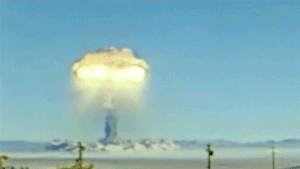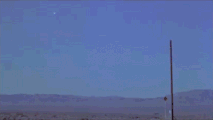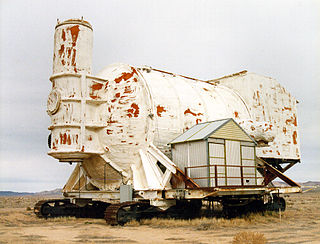
Operation Tinderbox was a series of 14 nuclear tests conducted by the United States in 1979–1980 at the Nevada Test Site. These tests followed the Operation Quicksilver series and preceded the Operation Guardian series.
Operation Guardian was a series of 14 nuclear tests conducted by the United States in 1980–1981 at the Nevada Test Site. These tests followed the Operation Tinderbox series and preceded the Operation Praetorian series.

Operation Storax was a series of 47 nuclear tests conducted by the United States in 1962–1963 at the Nevada Test Site. These tests followed the Operation Fishbowl series and preceded the Operation Roller Coaster series.
Operation Latchkey was a series of 38 nuclear tests conducted by the United States in 1966–1967 at the Nevada Test Site. These tests followed the Operation Flintlock series and preceded the Operation Crosstie series.
Operation Quicksilver was a series of 16 nuclear tests conducted by the United States in 1978–1979 at the Nevada Test Site. These tests followed the Operation Cresset series and preceded the Operation Tinderbox series.

Operation Ranger was the fourth American nuclear test series. It was conducted in 1951 and was the first series to be carried out at the Nevada Test Site. All the bombs were dropped by B-50D bombers and exploded in the open air over Frenchman Flat (Area 5).

Operation Greenhouse was the fifth American nuclear test series, the second conducted in 1951 and the first to test principles that would lead to developing thermonuclear weapons. Conducted at the new Pacific Proving Ground, on islands of the Enewetak Atoll, it mounted the devices on large steel towers to simulate air bursts. This series of nuclear weapons tests was preceded by Operation Ranger and succeeded by Operation Buster-Jangle.

Operation Teapot was a series of 14 nuclear test explosions conducted at the Nevada Test Site in the first half of 1955. It was preceded by Operation Castle, and followed by Operation Wigwam. Wigwam was, administratively, a part of Teapot, but it is usually treated as a class of its own. The aims of the operation were to establish military tactics for ground forces on a nuclear battlefield and to improve the nuclear weapons used for strategic delivery.

Operation Tumbler–Snapper was a series of nuclear weapons tests conducted by the United States in early 1952 at the Nevada Test Site. The Tumbler–Snapper series of tests followed Operation Buster–Jangle and preceded Operation Ivy.

Operation Sunbeam was a series of four nuclear tests conducted at the United States's Nevada Test Site in 1962. Operation Sunbeam tested tactical nuclear warheads; the most notable was the Davy Crockett.
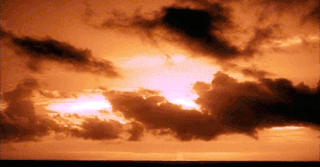
Operation Redwing was a United States series of 17 nuclear test detonations from May to July 1956. They were conducted at Bikini and Enewetak atolls by Joint Task Force 7 (JTF7). The entire operation followed Project 56 and preceded Project 57. The primary intention was to test new, second-generation thermonuclear weapons. Also tested were fission devices intended to be used as primaries for thermonuclear weapons, and small tactical weapons for air defense. Redwing demonstrated the first United States airdrop of a deliverable hydrogen bomb during test Cherokee. Because the yields for many tests at Operation Castle in 1954 were dramatically higher than predictions, Redwing was conducted using an "energy budget": There were limits to the total amount of energy released, and the amount of fission yield was also strictly controlled. Fission, primarily "fast" fission of the natural uranium tamper surrounding the fusion capsule, greatly increases the yield of thermonuclear devices, and constitutes the great majority of the fallout, as nuclear fusion is a relatively clean reaction.
The United States's Praetorian nuclear test series was a group of 19 nuclear tests conducted in 1981–1982. These tests followed the Operation Guardian series and preceded the Operation Phalanx series.
Operation Grenadier was a series of 16 nuclear tests conducted by the United States in 1984–1985 at the Nevada Test Site. These tests followed the Operation Fusileer series and preceded the Operation Charioteer series.
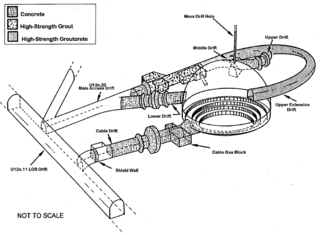
Operation Charioteer was a series of 16 nuclear tests conducted by the United States in 1985–1986 at the Nevada Test Site. These tests followed the Operation Grenadier series and preceded the Operation Musketeer series.
The United States's Musketeer nuclear test series was a group of 14 nuclear tests conducted in 1986–1987. These tests followed the Operation Charioteer series and preceded the Operation Touchstone series.

The United States's Touchstone nuclear test series was a group of 13 nuclear tests conducted in 1987–1988. These tests followed the Operation Musketeer series and preceded the Operation Cornerstone series.

Operation Anvil was a series of 21 nuclear tests conducted by the United States in 1975–1976 at the Nevada Test Site. These tests followed the Operation Bedrock series and preceded the Operation Fulcrum series.
Operation Roller Coaster was a series of four nuclear tests conducted jointly by the United States and the United Kingdom in 1963, at the Nevada Test Site. The tests did not involve the detonation of any nuclear weapons. Instead, their purpose was to evaluate the distribution of radioactive particles in a "dirty bomb" scenario, or an inadvertent, non-nuclear detonation of a nuclear weapon, as well as to evaluate the effectiveness of storage structures in containing the explosion and the particles released. The tests followed the Operation Storax series and preceded the Operation Niblick series.
France carried out a series of 24 nuclear tests from 1971–1974 These tests followed the 1966–1970 French nuclear tests series and preceded the 1975–1978 French nuclear tests.
